
I am so happy to have found this fern! Ferns are one of my weakest groups, and I didn’t know anything about this species, which often goes by the name of maidenhair spleenwort, until it was posted a few months ago in one of the FB groups to which I belong.
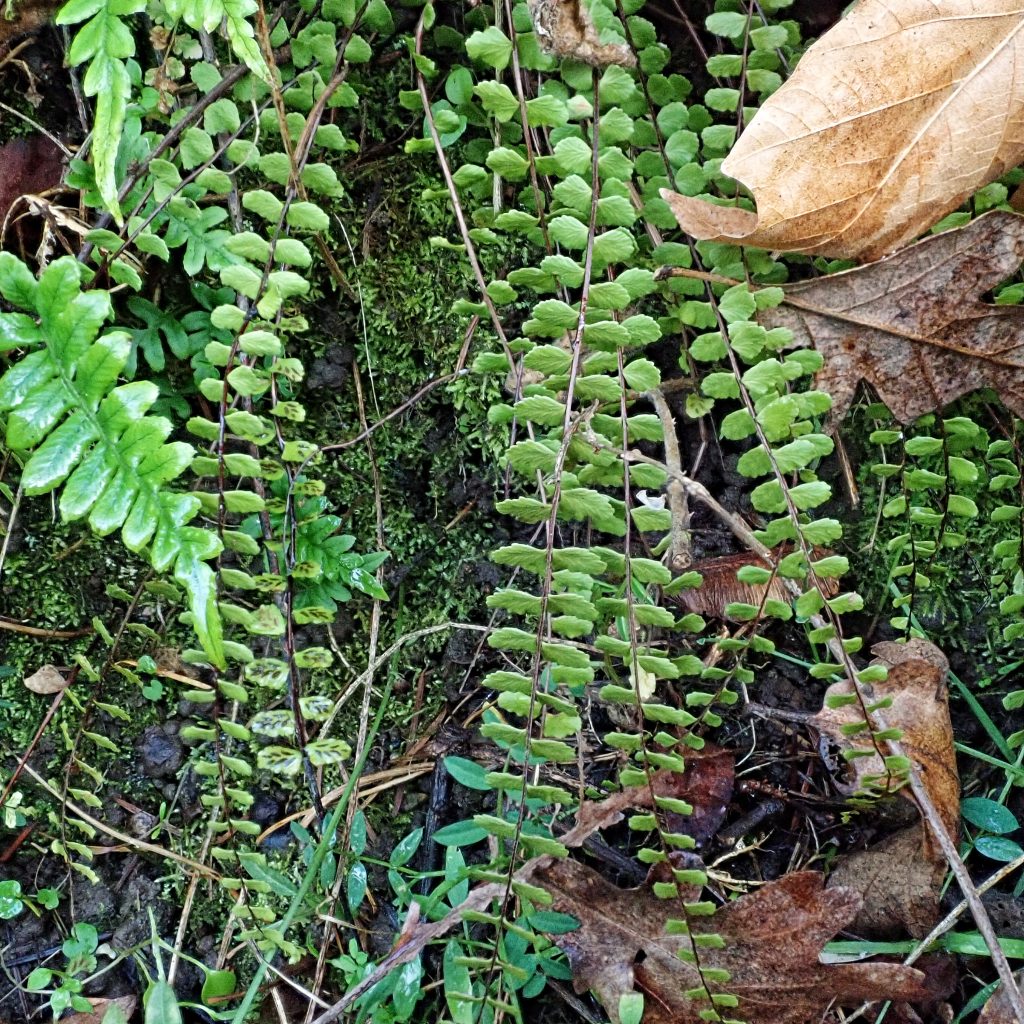
I figured that I probably had seen it before, since it’s not rare, but because of the very superficial similarities of dark stem and small pinnae, I had ignorantly assumed it was that other dark stemmed maidenhair, Adiantum pedatum (Northern Maidenhair Fern).
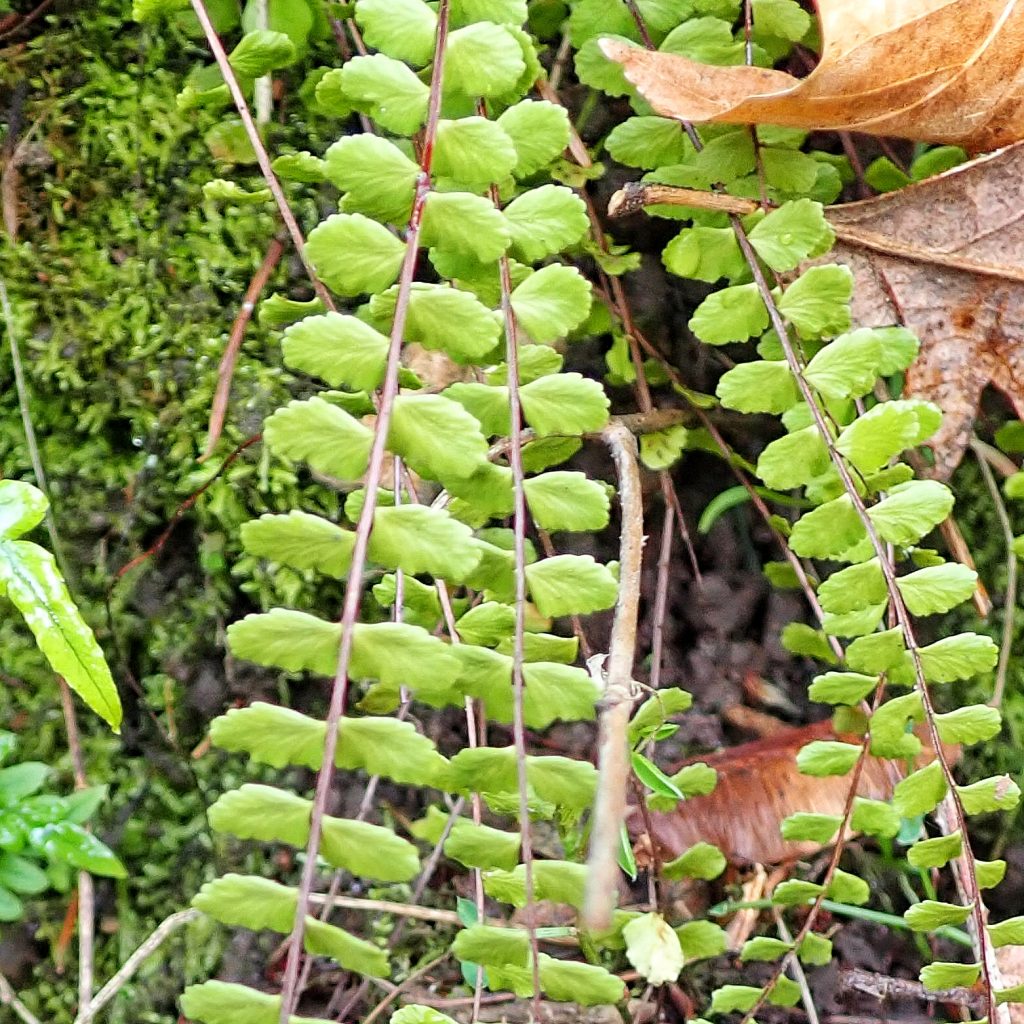
When I did see it on Sunday, peeking through the decumbent fronds of a sword fern, in a tangle of vine maple alongside a basaltic boulder, it was unmistakable, and I realized yet again how often I fail to look closely at things when I think I recognize them.
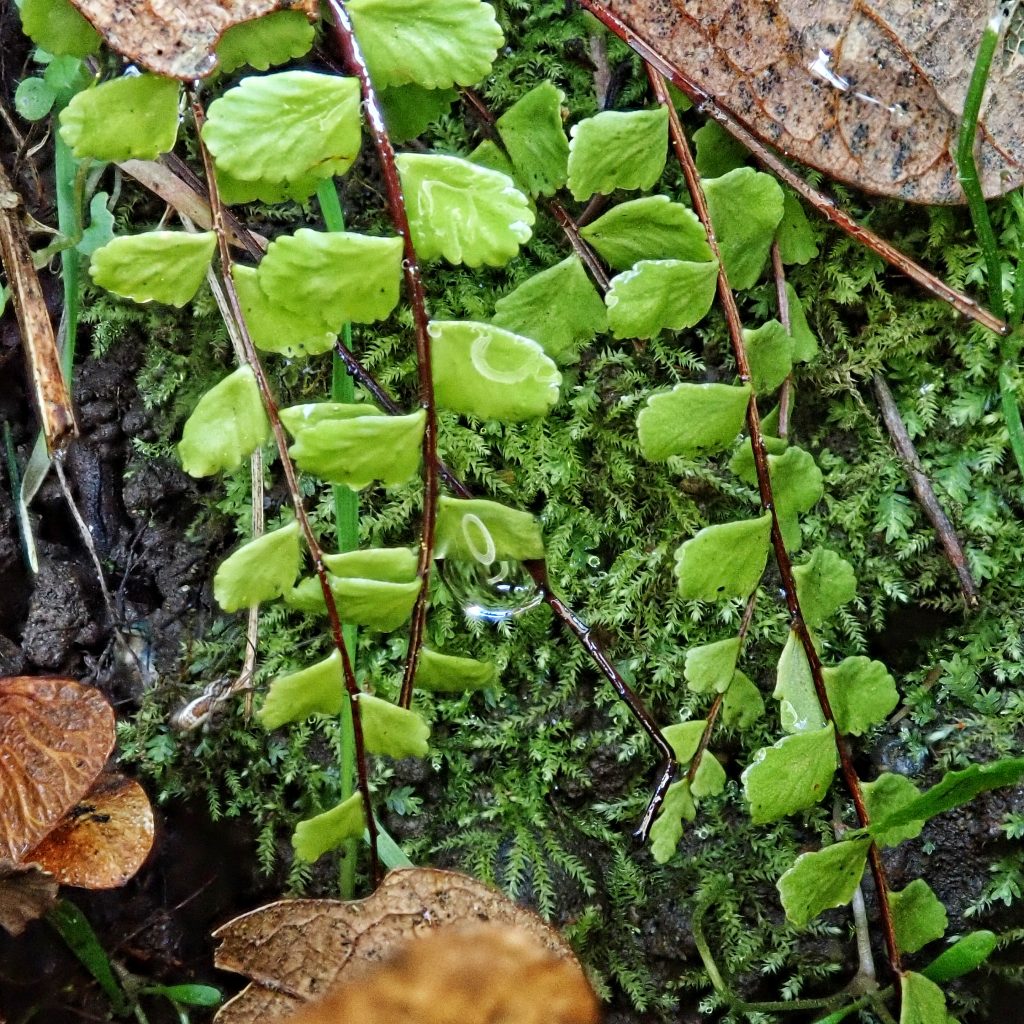
And really, they are not very similar. I knew now to look beyond that very dark stem for single fronds, rather than a fan of fronds from a single stem, and long sori in the middle of the leaf, rather than oblong sori covered by a revolute leaf margin (called a false indusium). And, not only are the pinnae shaped very differently, but they are also much smaller.
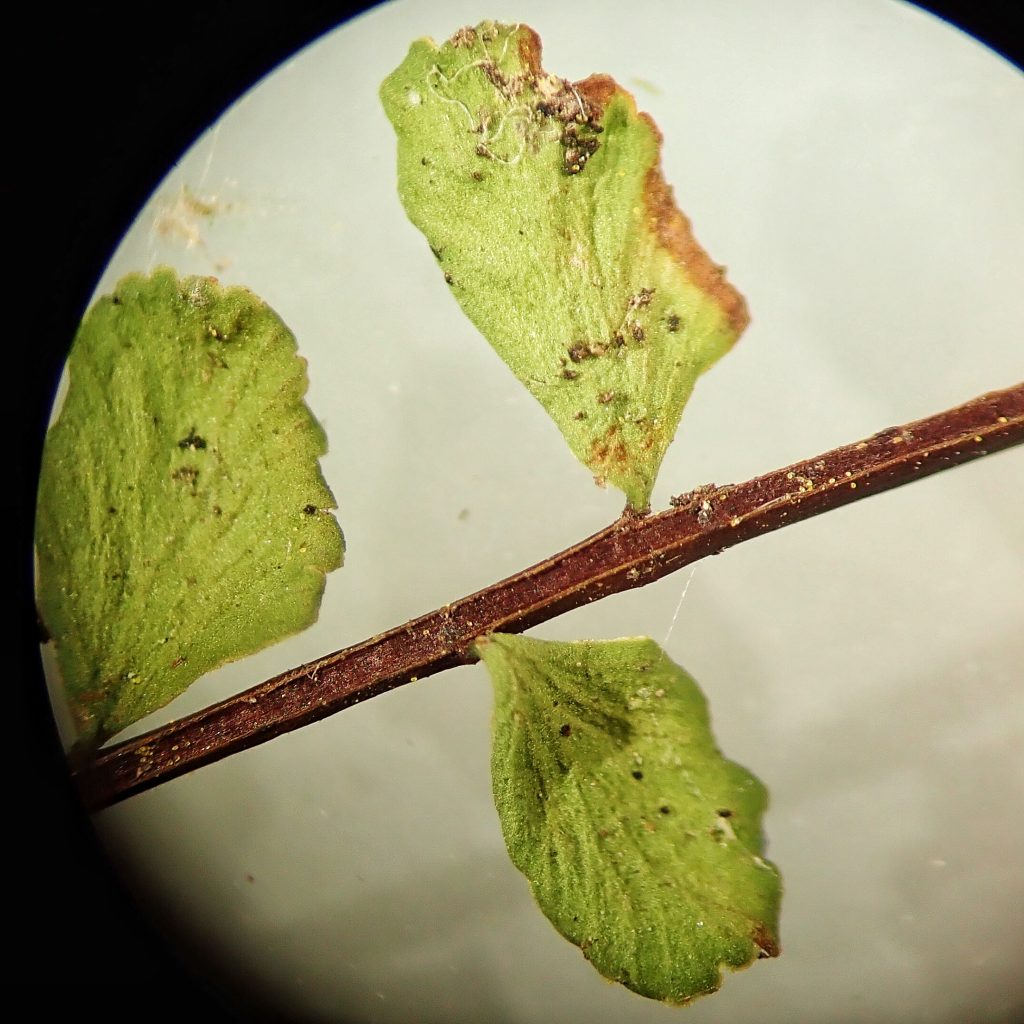
Something that is very interesting about this fern is that it has diploid and tetraploid (4 sets of chromosomes) types. They are considered to be subspecies, and the one I found, A. t. trichomanes is diploid and prefers acidic rock areas, while the other, A. t. quadrivalens, which is very rare in our region, is tetraploid and likes calcareous rock. And, because of this polyploidal nature it forms hybrids easily, most of which are sterile. However, in western BC, it does form an occasionally fertile hybrid with Asplenium viride, which is called Asplenium adulterinum.
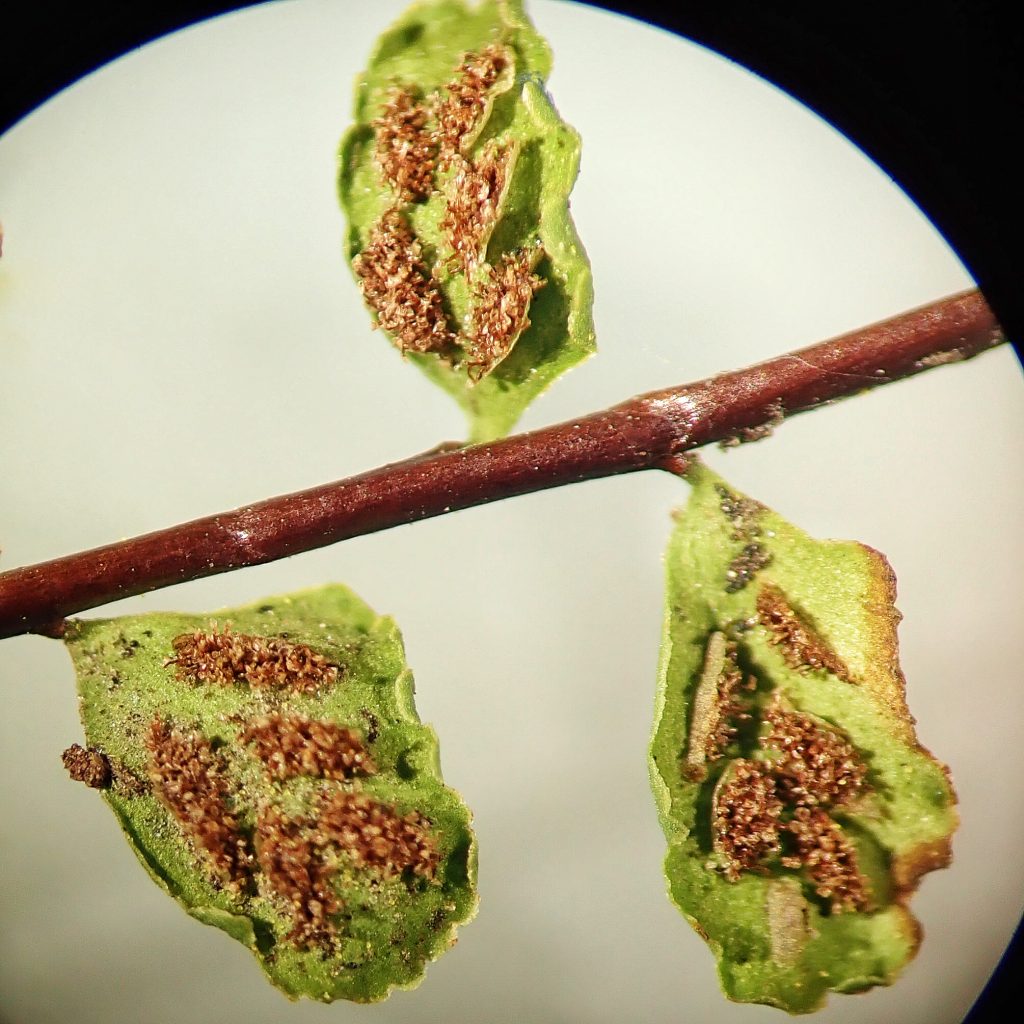
Asplenium trichomanes is quite pleasing to look at. It may lack the graceful symmetry of Adiantum pedatum, but it has its own delicate and elegant simplicity. And I am getting better at close study of all surrounding flora and fauna, although that has undoubtedly made me a frustrating hiking companion for those looking for exercise on the trails.
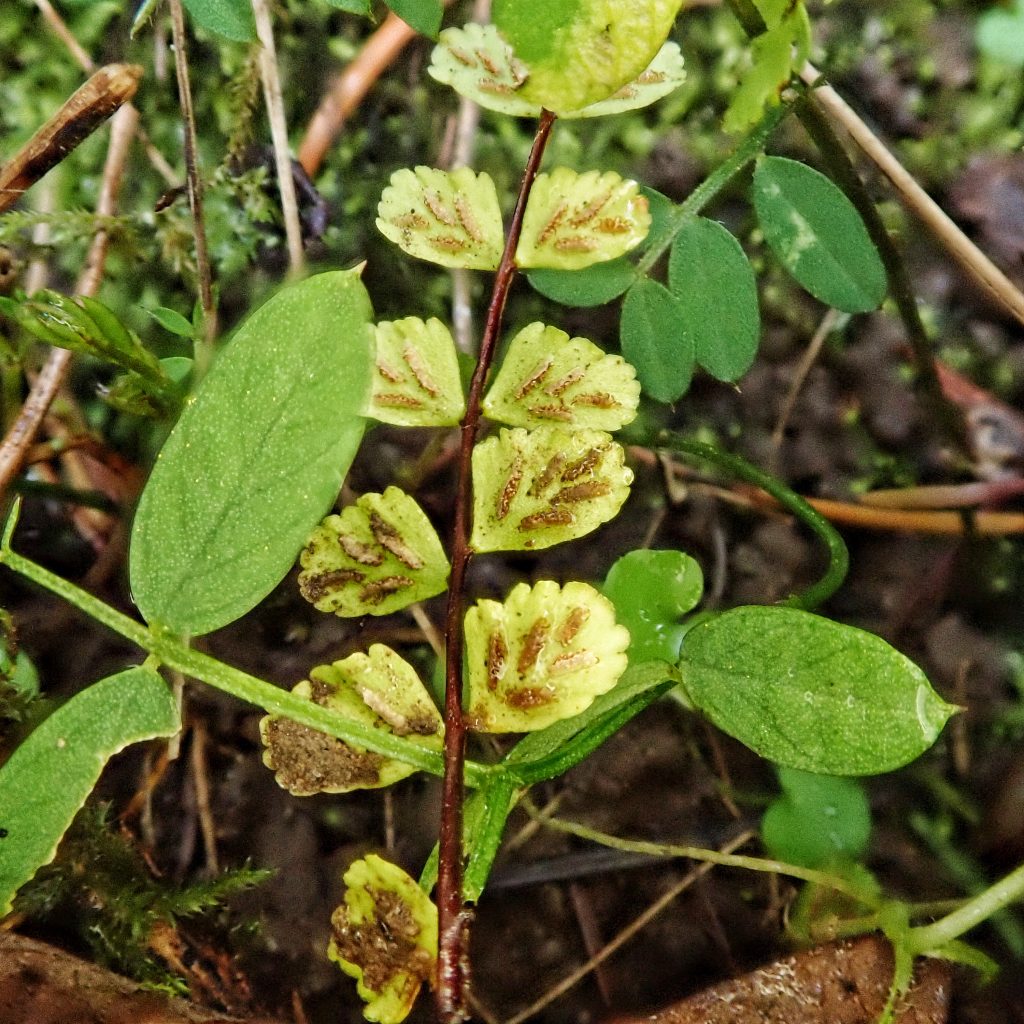
Description– Dark purple rachis (stem), once pinnate, with small green rectangular/oblong and shallowly lobed pinnae; pinnae are usually more or less opposite, and are broader on the upper half; multiple fronds arising from a central rhizome (root wad), usually with many old and denuded rachises; sori are oblong to linear, and in the middle of the pinnae.
Similar species– Asplenium viride has a green rachis and the pinnae are more fan-shaped; Adiantum pedatum (Northern Maidenhair Fern) has multiple fronds arising from a single rachis, and marginal sori, which are usually hidden by a rolled leaf edge; Cystopteris fragilis also has a dark rachis, but is twice pinnate, with sessile and more deeply lobed pinnae, and has round sori.
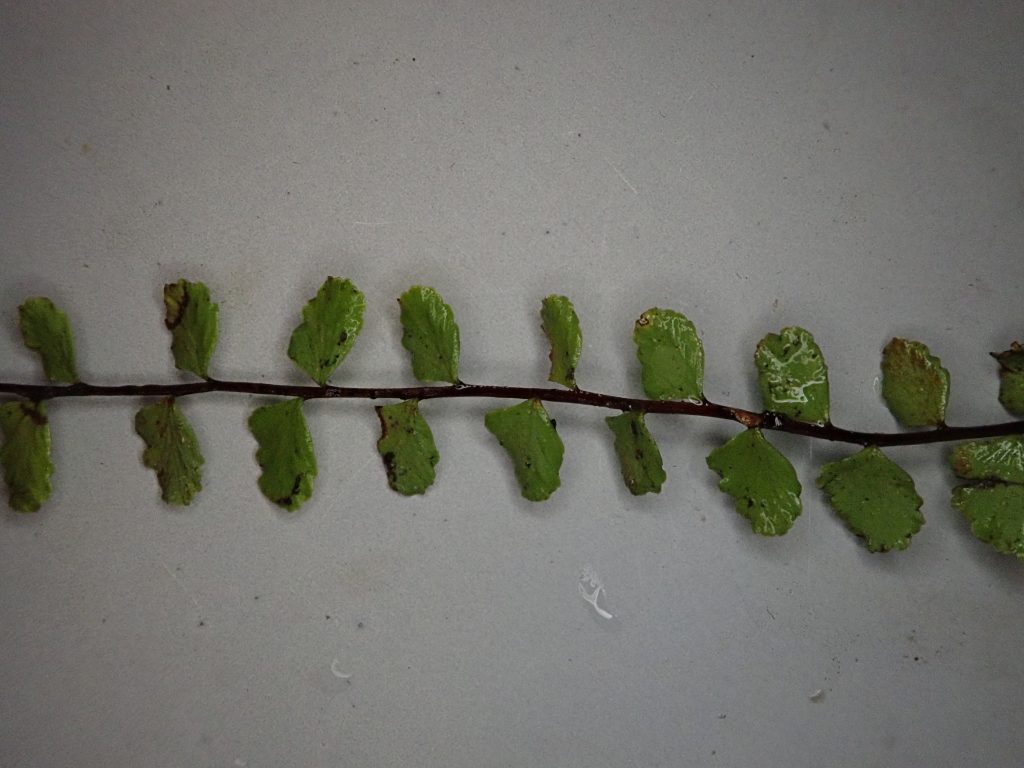
Habitat-Damp, coniferous forests, usually on or over rock.
Range– Worldwide; Cascades and west in our region, and in the northern Rockies.
Reproductive timing– Spores produced in fall and winter
Etymology of names– Asplenium comes from the Greek and means “without a spleen”, in reference to the ancient belief that members of this genus could be used to treat problems of the spleen.
The specific epithet trichomanes comes from the Greek and means ‘lacking hairs’. This may reference the glabrous ventral side of the pinnae, a trait this species does not share with most Asplenium. It also seems to be an ancient Greek word for fern.
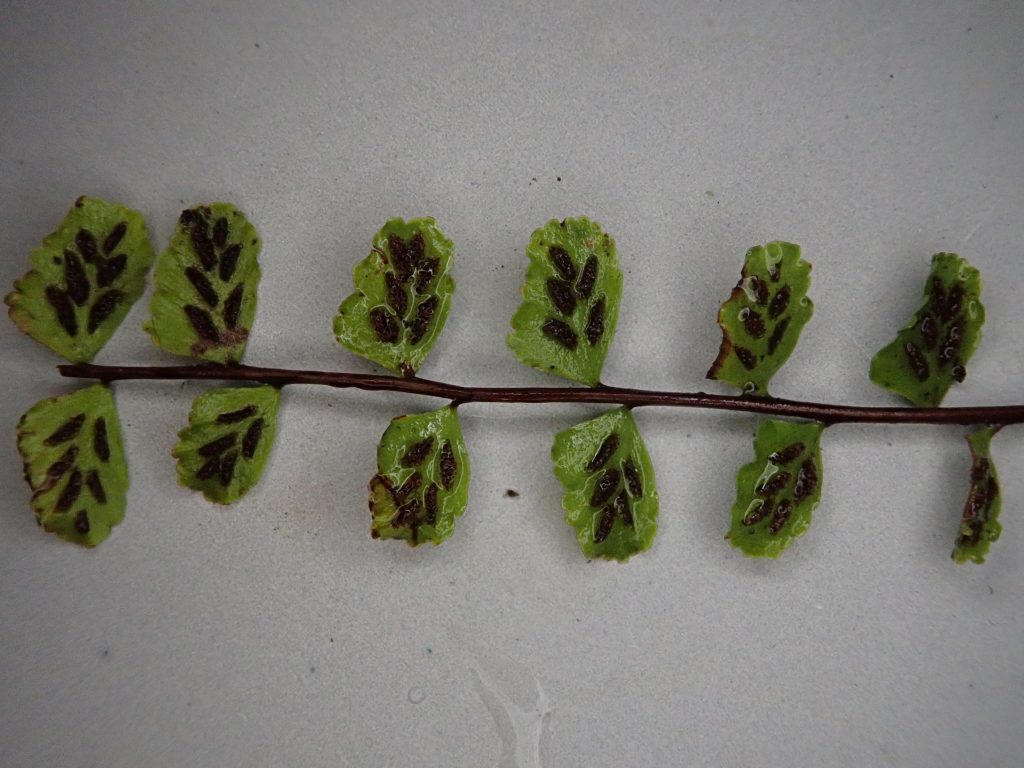
http://www.efloras.org/florataxon.aspx?flora_id=1&taxon_id=200004180
https://www.minnesotawildflowers.info/fern/maidenhair-spleenwort
https://dnr.wi.gov/topic/EndangeredResources/Plants.asp?mode=detail&SpecCode=PPASP021K0
https://pfaf.org/user/Plant.aspx?LatinName=asplenium+trichomanes
https://en.m.wikipedia.org/wiki/Asplenium_trichomanes
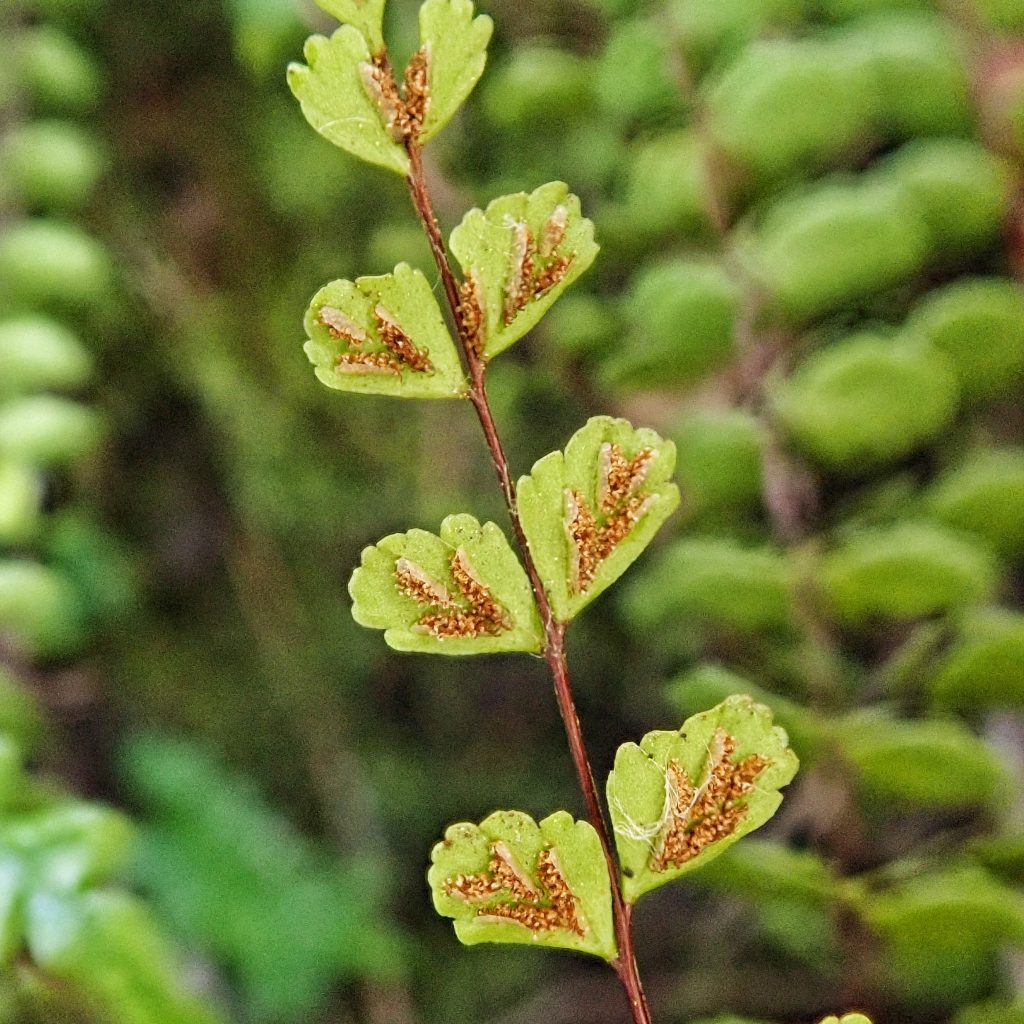
👍☺️